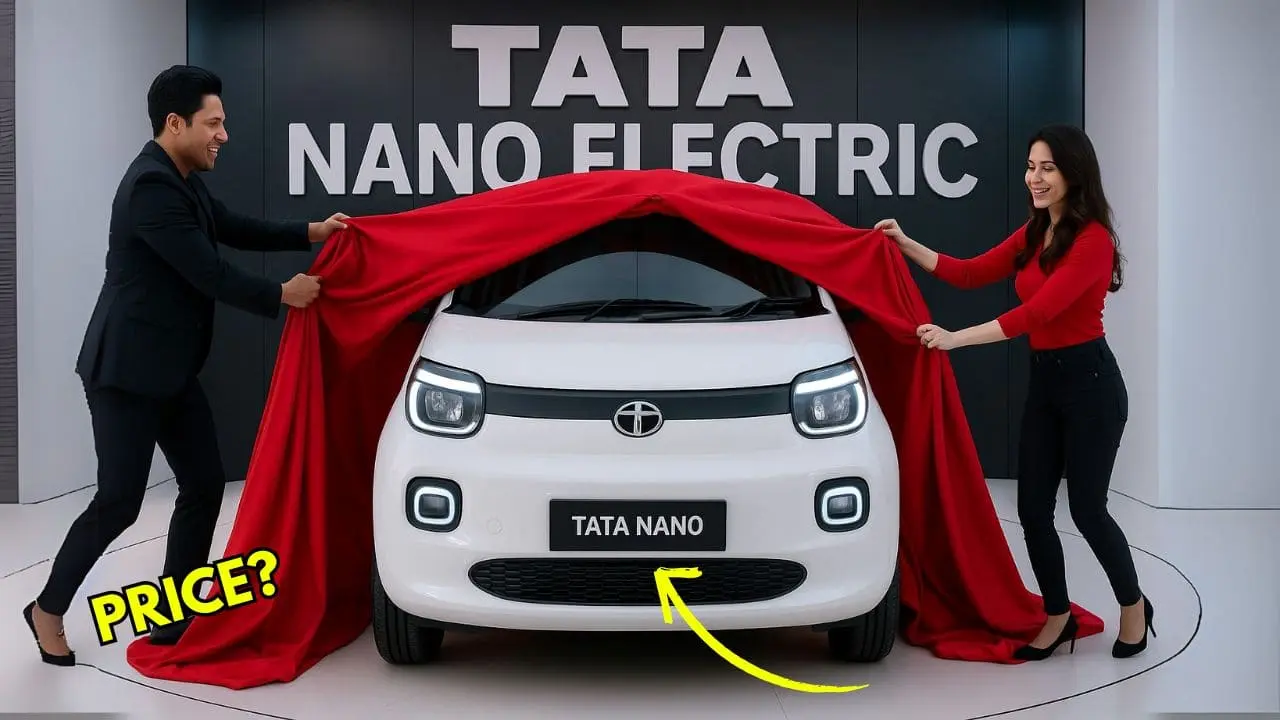The Tata Nano is making a comeback—and this time, it’s not here to be laughed at.
Once known (and often mocked) as “the world’s cheapest car,” the Nano had its moment in the spotlight before quietly bowing out. But 2025 brings a surprise twist in the tale: Tata Motors is bringing the Nano back as an electric vehicle, and it’s nothing like the version that came before.
This new Nano EV isn’t just about nostalgia—it’s a bold attempt to make electric cars more affordable for the masses. If you think EVs are only for the rich or tech bros in Teslas, think again.
A Whole New Attitude: Nano’s Reinvention
Let’s be honest—the original Nano had a rough ride. It was meant to be “a car for every Indian family,” but it quickly became a meme. People joked about it, doubted it, and dismissed it.
But Tata didn’t forget. And they didn’t give up.
Fast forward to today, and the Nano EV feels like a total glow-up. The goofy image is gone, replaced by a clean, modern design, smart features, and a legit electric powertrain. It’s like that quiet kid from school who shows up at the reunion looking sharp, successful, and rolling up in a brand-new whip. Except now, the Nano is the whip.
Under the hood (or where the hood used to be, at least), Tata ditched the rear-engine setup and went with a front-wheel-drive electric layout, giving the car better balance, more space inside, and, crucially, a safer structure overall.
Read Also: 2025 Maruti Suzuki Baleno Facelift: What’s New in Design, Tech, and Performance?
The Specs That Matter: Small Car, Big Moves
Don’t let its size fool you—the Nano EV has some real firepower packed inside. It’s aimed at the kind of person who just wants a solid, no-nonsense car for daily city use… but with modern tech and fewer emissions.
Here’s a quick breakdown of what it offers:
| Feature | Details |
|---|---|
| Price | ₹4.5 lakh (~$5,400) |
| Battery | 40 kWh Li-ion |
| Range | ~300 km per charge |
| Fast Charging | 80% in under 1 hour |
| Top Speed | 80 km/h |
| Acceleration | 0–100 km/h in 10 seconds |
| Infotainment | Android Auto, Apple CarPlay |
| Safety | Dual airbags, ABS, rear parking sensors |
| Build Location | Sanand, Gujarat |
It’s compact, efficient, and just enough car for city life. No excess. No fluff.
Why This EV Matters Right Now
This isn’t just about building a cheaper car. This is about changing who electric cars are for.
Right now, if you want an EV in India, you’re looking at spending ₹8–12 lakh minimum. That puts it way out of reach for a lot of people. The Nano EV, at ₹4.5 lakh, is a serious outlier—and that’s a good thing.
For the first time, you’ve got a proper EV that someone upgrading from a two-wheeler or buying their first car can actually afford.
And it’s not just cheap. It’s smartly built. You get tech features you’d expect in something twice the price. You get a proper infotainment system. Real safety features. And best of all, you don’t need to feel like you’re compromising to go green.
Nano EV vs. Everyone Else
If you’re comparing cars, here’s how the Nano EV stacks up against other entry-level EVs:
| Model | Price | Range | Battery | Fast Charging | Extras |
|---|---|---|---|---|---|
| Nano EV | ₹4.5 lakh | 300 km | 40 kWh | Yes | Digital dash, dual airbags |
| MG Comet EV | ₹8 lakh | 230 km | 17.3 kWh | Yes | Compact design, touchscreen |
| Tata Tiago EV | ₹8.7 lakh | 250 km | 24 kWh | Yes | Android Auto, reverse camera |
| Citroen eC3 | ₹11.5 lakh | 320 km | 29.2 kWh | Yes | Stylish interiors, premium build |
The takeaway? The Nano EV wins on price and range, hands down.
What People Are Saying
The Good
Early reactions from buyers have been pretty positive. For a lot of young folks or first-time buyers, the Nano EV is exciting because it’s something new that actually makes sense.
People are loving the modern interior, the tech setup, and the fact that it doesn’t feel like a “budget” car when you’re inside it. It’s basic where it needs to be, smart where it counts.
The Concerns
Of course, not everyone’s sold. Range anxiety is still a thing, especially in smaller cities or towns where charging stations are few and far between.
But with government incentives and Tata’s own charging infrastructure expanding, that fear is starting to fade.
Built From Scratch, Not Just Updated
What’s especially cool about the Nano EV is how much work Tata put into making it feel new.
It’s not just the old Nano with a battery pack. They re-engineered the platform, improved battery cooling, optimized weight distribution, and overhauled the electronics. It feels modern because it is modern. Not a retrofit. Not a gimmick.
And despite all that? It’s still being built in India, by Indian engineers, for Indian roads.
Final Thoughts: More Than a Car—A Cultural Reset
In a lot of ways, the new Nano EV is Tata Motors saying, “We’re not done yet.”
They took one of their biggest public failures and turned it into something bold and forward-thinking. That takes guts. And vision.
Whether you’re a young commuter tired of rising fuel prices, a parent looking to upgrade from a two-wheeler, or just someone curious about EVs but not willing to drop ₹10 lakh on one—the Nano EV might be exactly what you’ve been waiting for.
It’s not just a car. It’s a second chance, for the Nano and for Indian electric mobility.
